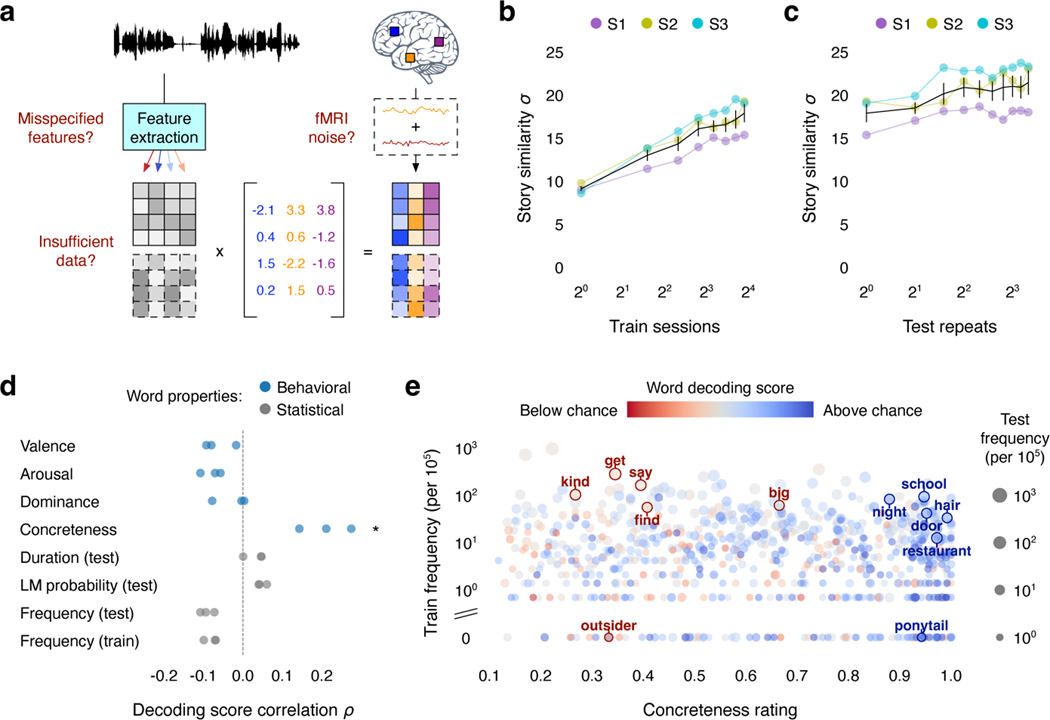Fig. 4. Sources of decoding error.
(a) Potential factors limiting decoding performance. (b) To test if decoding performance is limited by the size of the training dataset, decoders were trained on different amounts of data. Decoding scores appeared to increase by an equal amount each time the size of the training dataset was doubled. (c) To test if decoding performance is limited by noise in the test data, the signal-to-noise ratio of the test responses was artificially raised by averaging across repeats of the test story. Decoding performance slightly increased with the number of averaged responses. (d) To test if decoding performance is limited by model misspecification, word-level decoding scores were compared to behavioral ratings and dataset statistics (* indicates for all subjects, two-sided permutation test). Markers indicate individual subjects. (e) Decoding performance was significantly correlated with word concreteness—suggesting that model misspecification contributes to decoding error—but not word frequency in the training stimuli—suggesting that model misspecification is not caused by noise in the training data. For all results, black lines indicate the mean across subjects and error bars indicate the standard error of the mean ().

